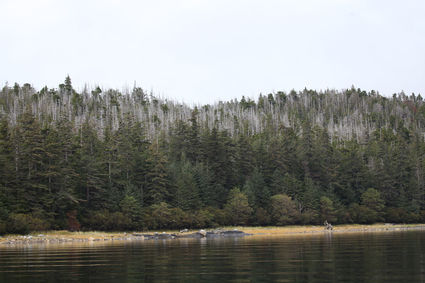Inadequate snow cover linked to yellow cedar decline

Pilot Photo
Swathes of dead yellow cedar can be seen in the coastal forests of Southeast. The snags remain standing for up to a century. Forest Service researchers have been looking into causes and uses for these large numbers of dead trees.
If you have traveled past Farragut Bay during the past couple of years, you have probably noticed the white, almost ghostly looking trees heavily peppered among what was once healthy forest. Those are dead yellow cedar, and the remarkable thing about the dead trees-also known as snags-is they can remain standing for up to 100 years.
The decline in yellow cedar came on the radar of the US Forest Service (USFS) in the 1980's, but USFS research plant pathologist Paul Hennon says the problem was documented long before then. In 1909, a hunter first noticed the snags of the species and wrote abou...
For access to this article please
sign in or
subscribe.




Reader Comments(0)